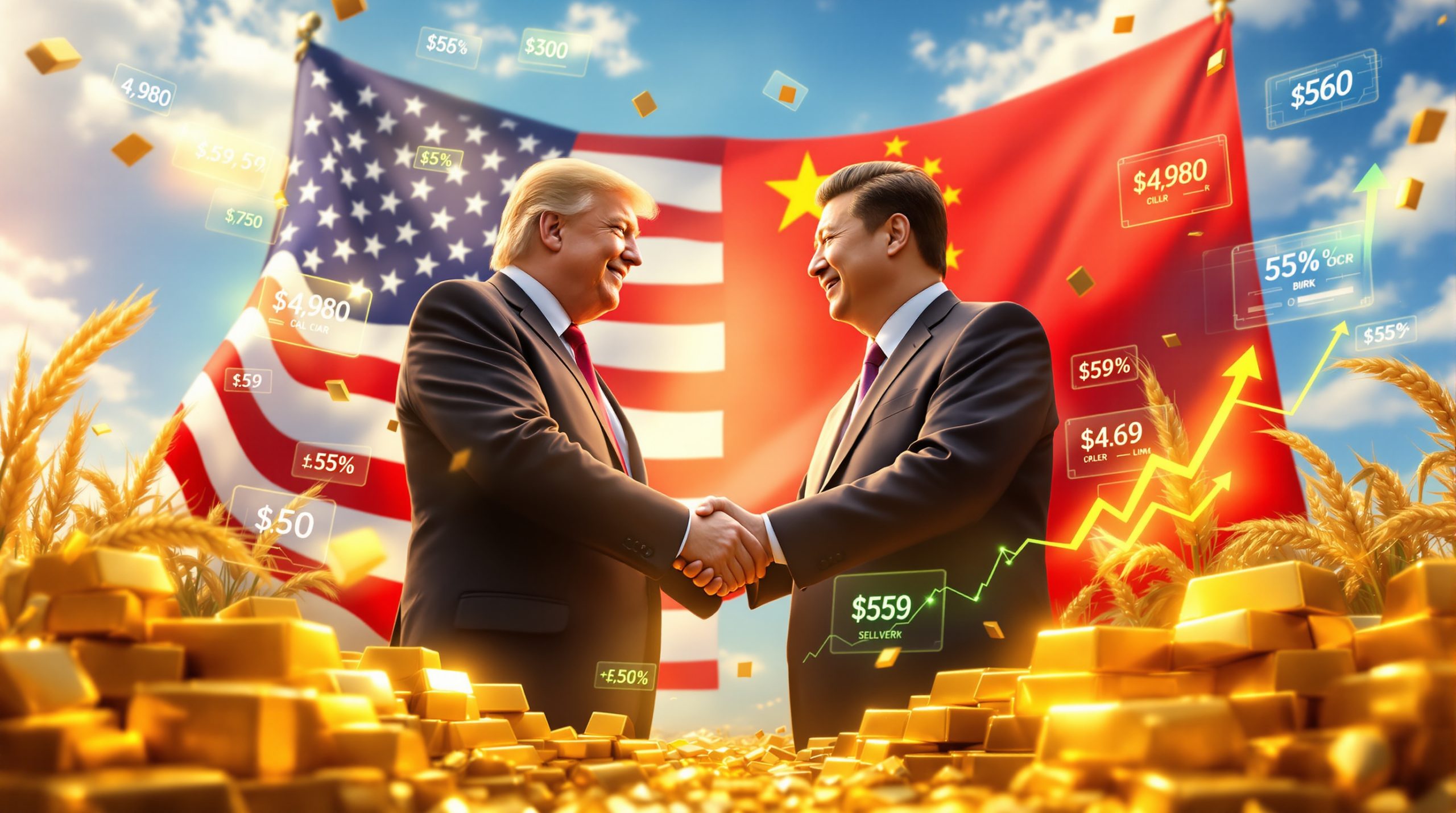Understanding Tariffs and Their Market Impact: A Comprehensive Analysis
Tariffs represent a critical economic policy tool with far-reaching implications for global markets. While seemingly straightforward as taxes on imported goods, their implementation can trigger complex market dynamics explained, reshape industry dynamics, and fundamentally alter economic trajectories. This analysis explores the multifaceted nature of tariffs and market impact, examining their historical context, immediate market reactions, and long-term investment implications.
What Are Tariffs and How Do They Work?
Tariffs function as government-imposed taxes on imported goods and services, designed to make foreign products more expensive relative to domestic alternatives. They serve multiple purposes: protecting local industries, generating government revenue, and serving as leverage in international trade negotiations. By artificially increasing the cost of foreign products, tariffs shift competitive advantages toward domestic producers, though often at the expense of consumers who face higher prices.
The economic consequences of tariffs extend beyond simple price adjustments, influencing employment patterns, industrial production, and global supply chains. When governments impose significant tariffs, they effectively reshape market incentives, potentially distorting efficient resource allocation and hampering productivity growth.
Historical Context of Tariffs
The Smoot-Hawley Tariff Act of 1930 stands as a cautionary tale in tariff implementation. This legislation imposed average duties of 20% on over 20,000 imported goods, contributing significantly to the deepening of the Great Depression by reducing international trade by 66% between 1929 and 1934. The resulting trade wars exacerbated economic hardship globally, illustrating the potential dangers of aggressive protectionism.
Recent tariff proposals echo this historical precedent in scale, targeting 20–30% duties on strategic imports and representing the most significant protectionist shift since the 1930s. Economic historians note that recessions linked to major tariff implementations typically see government deficits widen by approximately six percentage points, driven by declining GDP and increased stimulus spending.
How Do Markets Initially React to Tariff Announcements?
Market reactions to tariff announcements provide valuable insights into investor psychology and economic expectations. These initial responses often reveal underlying vulnerabilities and sentiment shifts before fundamental economic impacts materialize.
Equity Market Volatility
Recent tariff announcements triggered significant market turbulence, with the VIX volatility index spiking above 40—levels previously seen only during major crises like the 2020 COVID-19 crash. Two-day declines in the S&P 500 ranged from 9% to 14%, comparable to historical extremes observed during the 2008 financial crisis and the 2020 pandemic sell-off.
Notably, when the VIX exceeds 30, historical data suggests that aggressive bearish positioning becomes particularly risky, as markets often experience violent reversals. During recent tariff-related volatility, the CNN Fear and Greed Index plummeted to "extreme fear" territory (4/100), matching levels last seen at the March 2020 market bottom—a potential contrarian indicator.
Currency Market Impacts
The dollar exhibited unexpected behavior during recent tariff announcements, depreciating by 3.2% intraday despite simultaneously tightening financial conditions—a significant departure from its traditional role as a safe-haven currency. This evolving relationship between dollar strength and risk sentiment signals potential structural changes in currency markets.
Emerging market currencies faced particularly severe pressure, with the Brazilian real and Chinese yuan weakening 5–7% within 48 hours of tariff announcements. This asymmetric impact reflects the market's assessment of vulnerability to trade disruptions and capital flight risks in developing economies.
What Are the Sector-Specific Impacts of Tariffs?
Tariffs affect economic sectors unevenly, creating both challenges and opportunities across different industries based on their exposure to international trade, supply chain impact analysis, and competitive positioning.
Technology and Consumer Discretionary
The technology sector demonstrated notable vulnerability to tariff threats, underperforming broader markets by accumulating an 18% year-to-date decline during recent tariff discussions. Semiconductor manufacturers face particular exposure, with proposed 25% tariffs threatening to disrupt approximately $240 billion in global supply chains.
Interestingly, consumer discretionary stocks displayed divergent performance, with homebuilders gaining 12% during the same period despite broader market weakness. This resilience suggests that domestically-focused consumer segments may benefit from import substitution effects, even as globally integrated supply chains face disruption.
Mining and Commodities
Mining companies, particularly those with open-pit operations, experienced an unexpected benefit from tariff-related market turbulence as energy costs (which typically represent 30% of operating expenses) declined significantly. Operating margins expanded by approximately 9% for low-cost producers, creating a competitive advantage for energy-intensive mining operations.
The gold-to-oil ratio surged to 28:1 during recent market volatility, while the gold-to-silver ratio reached an extreme of 102:1—a level historically associated with major inflection points in precious metals markets. Silver's technical position appeared particularly oversold, mirroring patterns observed before the reversals in 2008 and 2020.
Energy Sector
Energy equities suffered disproportionately during recent tariff discussions, plunging 14% in just two days and extending an already challenging three-year consolidation phase. However, historical analogs suggest an 82% probability of meaningful recovery within 12 months following shocks of similar magnitude, potentially creating opportunities for contrarian investors.
The sector's unique positioning at the intersection of geopolitics, trade policy, and environmental regulation makes it particularly sensitive to tariff-induced disruptions, though the long-term transition toward greater energy independence in developed economies may mitigate some risks.
What Are the Macroeconomic Implications of Tariffs?
Tariffs generate ripple effects throughout the broader economy, influencing everything from growth prospects and inflation dynamics to fiscal balances and monetary policy constraints.
Recession Probability
The implementation of significant tariffs increases recession probability to approximately 60-70% within the next 12 months, based on deteriorating leading indicators including the yield curve inversion (2/10yr spread at -0.48%) and weakening Purchasing Managers' Indices (47.1). Historical data demonstrates that government deficits typically worsen during tariff-induced economic slowdowns, with deficit-to-GDP ratios expanding by six percentage points on average.
This fiscal deterioration occurs through a dual mechanism: declining tax revenues as economic activity contracts, coupled with increased government spending on stimulus measures and safety net programs. The resulting debt burden can constrain policy flexibility for years following the initial tariff implementation.
Inflation and Interest Rates
Tariffs create a complex inflation dynamic, with short-term breakeven inflation rates remaining elevated at 3.26% despite broader economic uncertainty. The 2-year versus 10-year breakeven spread has inverted significantly (-1.2%), indicating that markets expect elevated near-term inflation pressures but longer-term disinflationary forces.
This inflation outlook complicates the Federal Reserve's policy calculus, as it must balance price stability concerns against growth risks while operating with Federal Funds rates at 4.5%—significantly higher than during previous market crises. Two-year Treasury yields could potentially decline substantially if recession concerns intensify, creating volatility in fixed-income markets.
How Might Central Banks Respond to Tariff-Induced Market Stress?
Central banks face extraordinary challenges during periods of tariff-induced market stress, particularly when inflation and growth move in opposing directions, creating policy dilemmas with few historical precedents.
Federal Reserve Policy Considerations
The Federal Reserve enters the current tariff discussion with substantially less policy flexibility than during previous crises. With real interest rates at approximately 1.75% compared to -1.25% during the COVID crisis, the central bank's capacity to provide monetary stimulus appears constrained relative to historical norms.
Historical precedent from the 1930s demonstrates that central banks ultimately prioritized growth over inflation concerns when facing tariff-induced economic stress, with interest rates cut by two-thirds as protectionist policies were implemented. Today's Fed may eventually follow a similar path, though the starting point of higher rates provides more room for conventional policy easing before unconventional measures become necessary.
Stagflation Concerns
Markets are increasingly pricing stagflationary risks, with simultaneous concerns about economic stagnation and persistent inflation. This combination presents a particularly challenging environment for central banks, as conventional monetary policy tools affect both inflation and growth in the same direction.
Fed Chairman Powell has indicated that policy would focus primarily on whichever factor—inflation or growth—deviates further from target levels. With core PCE inflation at 4.7% (more than double the target) while unemployment claims have risen 18% year-over-year, the inflation mandate currently appears to be the more significant deviation, suggesting potential reluctance to ease policy despite growth concerns.
What Investment Opportunities Might Emerge From Tariff Policies?
Tariff implementations typically create market dislocations that generate both risks and opportunities across asset classes, geographies, and sectors, rewarding investors who can implement effective geopolitical investor strategies rather than focusing solely on cyclical disruptions.
Hard Assets vs. Equities
Gold has quietly outperformed the S&P 500 over the past decade, delivering annualized returns of 9.3% compared to 7.8% for equities. The commodities-to-equity ratio currently sits near 30-year lows, suggesting potential for hard assets to outperform financial assets during periods of trade uncertainty and inflationary pressures.
The dollar's current overvaluation (DXY at 120 versus purchasing power parity estimates around 95) represents the second most extreme level in modern history, potentially driving capital flows toward non-dollar assets as tariffs reshape global commodities insights and currency relationships.
Global Market Rotation
Historical patterns suggest potential for non-US markets to outperform following extended periods of US outperformance, similar to the market rotation that followed the 1985 Plaza Accord. The MSCI EAFE index currently trades at an 18% discount to the S&P 500, mirroring valuation disparities observed during previous inflection points in global market leadership.
Emerging markets, despite facing near-term pressure from tariff uncertainties, trade at approximately 11x forward earnings compared to 20x for US equities, creating potential value opportunities for investors with longer time horizons who can withstand interim volatility.
Precious Metals and Mining
Gold mining companies experienced a 9% one-day decline during recent tariff discussions, matching capitulation patterns that preceded major sector rallies in 2008, 2015, and 2020. Producers with open-pit operations stand to benefit from margin expansion as energy costs decline, potentially creating asymmetric return opportunities.
Silver appears technically oversold at current prices around $30/oz, with the gold-to-silver ratio at extreme levels (102) and futures positioning suggesting a potential 30% rebound based on historical mean reversion patterns. Mining equities' underperformance relative to physical metals has historically reversed following periods of extreme market stress.
FAQ About Tariffs and Market Impact
How do tariffs affect inflation?
Tariffs typically increase inflation in the short term by raising prices of imported goods. Current market data shows short-term inflation expectations remain elevated at 3.26%, while longer-term inflation expectations have moderated, creating an inverted inflation expectations curve. This pattern suggests markets anticipate initial price pressures followed by demand destruction and eventual disinflation.
What is the relationship between tariffs and currency values?
Tariffs introduce significant currency volatility by disrupting trade flows and altering interest rate expectations. The dollar's traditional role as a safe haven during market stress appears to be evolving, with recent data showing the dollar depreciating even as financial conditions tighten—a notable departure from historical relationships that suggests structural changes in global reserve currency dynamics.
How do tariffs impact government deficits?
While tariffs generate some initial revenue through import taxes, their overall impact on government finances tends to be negative if they trigger economic slowdowns. Historical data demonstrates that deficits typically increase by approximately six percentage points during tariff-induced recessions as tax revenues decline while countercyclical spending increases.
What sectors typically perform best during periods of high tariffs?
Domestically-focused industries with limited exposure to international trade tend to outperform during tariff implementations. Recent evidence suggests precious metals mining companies—particularly those with open-pit operations benefiting from lower energy costs—may demonstrate resilience, along with certain consumer staples and utilities that serve primarily domestic markets.
How long do market disruptions from tariff announcements typically last?
Initial market reactions to tariff announcements can be severe but often short-lived. Analysis of two-day market declines similar to recent events shows they frequently occur near important market bottoms, though recovery timing varies significantly across market cycles. The duration of disruption typically depends on whether tariffs are perceived as negotiating tactics or permanent structural changes to trade relationships like China's export restrictions, which can have lasting effects on global trade patterns.
Ready to Stay Ahead of Major ASX Mineral Discoveries?
Gain immediate insights into significant Australian mineral discoveries with Discovery Alert's proprietary Discovery IQ model, turning complex data into actionable investment opportunities. Begin your 30-day free trial at Discovery Alert today and position yourself ahead of the market for potentially substantial returns.




